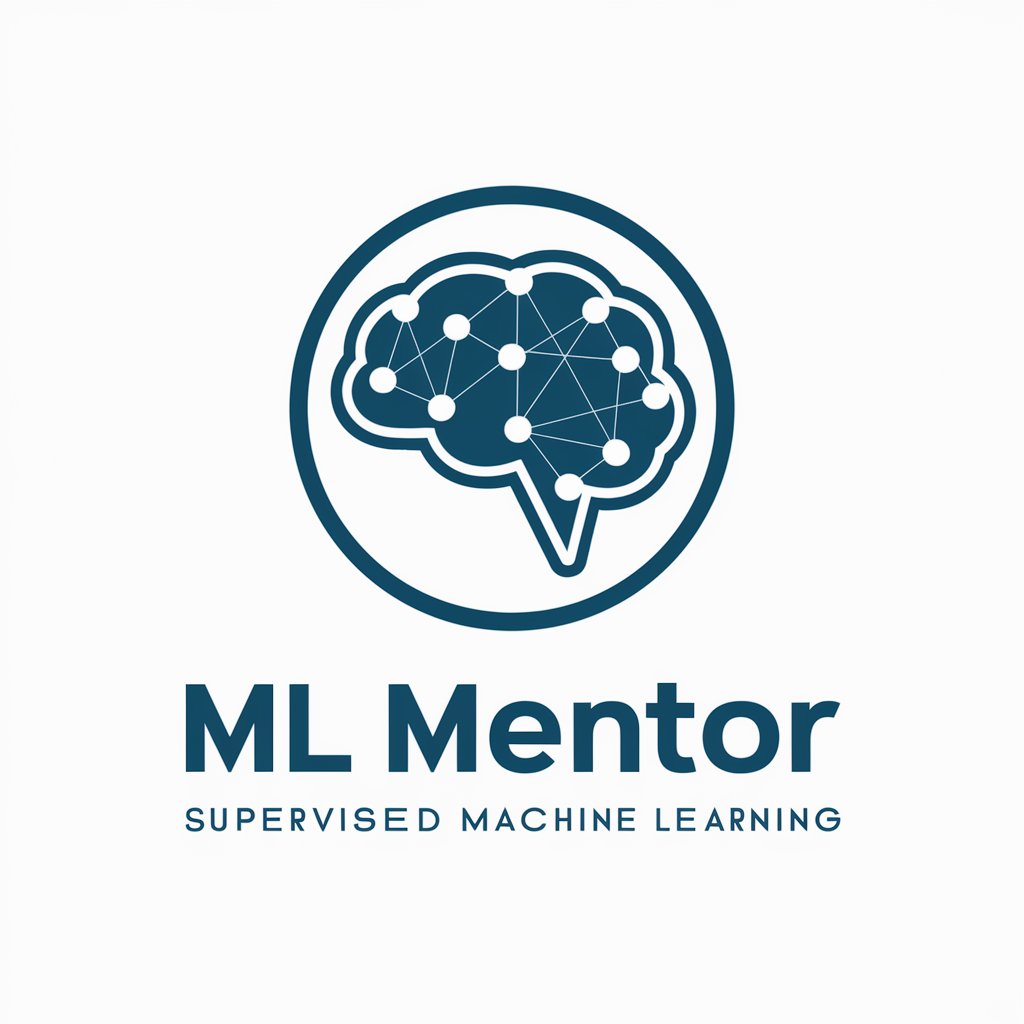Machine Learning - AI-Powered Learning Tool

Welcome to ML Mentor, your guide to mastering supervised learning!
Empower Decisions with AI
Explain the concept of generalization error in machine learning.
Describe the difference between overfitting and underfitting.
What are the key steps in the PAC learning framework?
How does cross-validation help in model selection?
Get Embed Code
Introduction to Machine Learning
Machine Learning (ML) is a field within artificial intelligence that focuses on developing algorithms capable of learning from and making predictions or decisions based on data. ML systems learn from historical data to identify patterns and features that can be used to make predictions on new, unseen data. The purpose of ML is to create models that can perform tasks without being explicitly programmed to do so. For example, ML can be used in image recognition, where a model is trained with a dataset of images labeled according to their content, and once trained, it can classify new images into these categories. Powered by ChatGPT-4o。

Main Functions of Machine Learning
Classification
Example
Email spam filtering
Scenario
In an email application, ML models classify incoming messages as 'spam' or 'not spam' based on training data of labeled emails.
Regression
Example
House price prediction
Scenario
Real estate platforms use ML to predict house prices based on features like location, size, and number of rooms.
Clustering
Example
Customer segmentation
Scenario
Marketing departments use clustering to group customers based on purchasing behavior to tailor marketing strategies.
Anomaly Detection
Example
Fraud detection in transactions
Scenario
Financial institutions use anomaly detection to identify unusual patterns in transactions that could indicate fraud.
Ideal Users of Machine Learning Services
Businesses
Businesses across industries utilize ML to enhance decision making, improve customer engagement, and optimize operations.
Researchers
Academics and researchers use ML to analyze complex data sets, from genomics to climate modeling, uncovering insights that are not observable by human analysis alone.
Healthcare Providers
Healthcare providers apply ML to diagnose diseases more accurately and personalize treatment plans for patients.
Government Agencies
Governmental bodies employ ML for various applications, including traffic management, public safety, and environmental monitoring.

Guidelines for Using Machine Learning
1
Visit yeschat.ai for a trial without login, also bypassing the need for ChatGPT Plus.
2
Select a problem suited for machine learning such as spam detection, customer prediction, or image recognition.
3
Prepare your dataset: collect, clean, and preprocess data to form training, validation, and testing sets.
4
Choose an appropriate machine learning model and training algorithm based on the problem complexity and data characteristics.
5
Train your model, evaluate its performance using the test data, and fine-tune parameters to enhance the model's accuracy.
Try other advanced and practical GPTs
Français Learning
Master French with AI Power

AI Remover
Empower your writing with AI-powered authenticity.

Buddha Recovery
Blending Buddhism with Modern Recovery

Recovery Companion
Empowering Recovery, Enhancing Resilience

Recovery Companion
Empowering Recovery with AI

Recovery Guide
Empowering recovery, enhancing lives

Learning Companion
Empowering education with AI insight

Socratic Learning
Empowering inquiry with AI

Marketing Master
Revolutionize Your Marketing with AI

Marketing Maven
Empowering Marketing with AI

Mario Marketing
Empowering Your Brand with AI-Driven Marketing

Marketing Peixoto
Strategize, Organize, and Optimize with AI

FAQs on Machine Learning
What is machine learning?
Machine learning is a field of artificial intelligence that uses statistical techniques to give computer systems the ability to 'learn' from data, without being explicitly programmed.
How does machine learning work?
Machine learning algorithms build a model based on sample data, known as 'training data', in order to make predictions or decisions without being explicitly programmed to perform the task.
Can machine learning predict stock market trends?
Yes, machine learning can be used to analyze and predict stock market trends based on historical data and trends, though accuracy can vary greatly.
What are the types of machine learning?
The main types are supervised learning, unsupervised learning, and reinforcement learning, each differing by the nature of the 'signal' or 'feedback' available to the learning system.
Is machine learning reliable?
Machine learning's reliability depends on the quality and quantity of the data, the appropriateness of the algorithms used, and the expertise with which they are applied.
